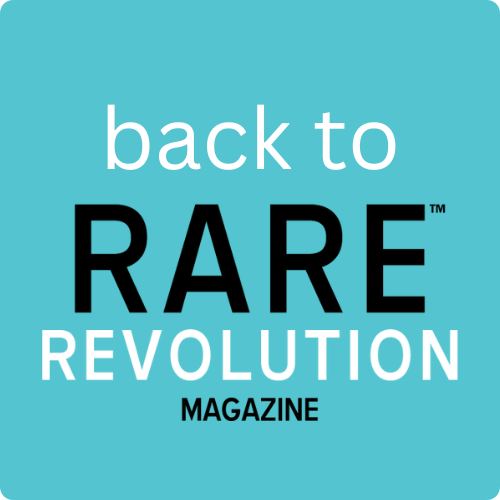Voices united: addressing the unmet needs of patient advocacy groups
Estimated reading time: 8 minutes

Rare disease charities and advocacy groups provide a crucial life-line to patients and bring communities together. But increasingly more is being asked of these groups—to be a trusted source of information, not just for patients, but for HCPs, and to become involved in research activities, often raising considerable amounts of money to fund studies and researchers in a bid to improve the lives of those they represent. They can be meaningful partners in the world of research and development and together with industry, can move mountains. Hearing from some of our advocacy groups over the last five months, here are some of the main unmet needs they have identified for their organisation and community
Running on empty
A lack of core funding is often one of the biggest challenges rare disease charities face. Without sustained and regular income, operational costs such as staffing, utilities, technology and supplies, and marketing can be difficult, if not impossible, to maintain.
Many rare disease charities are founded by families and patients, motivated by a lack of research and support and driven by a personal desire to make a difference and be proactive, when so much about living with rare is out of their control. Most organisations are small, start from kitchen tables and rely on volunteers, friends, family and a whole lot of goodwill.
Yet the income that most of these small charities generate is nowhere near proportionate to the work they do and the impact they have.
As Victoria Roe, fundraising and events officer for Action for XP, states, “For the families we serve, our support isn’t “nice to have” it’s essential.”
Rare disease charities provide support, a community and valuable resources and information. They can be a lifeline for families facing life with a rare diagnosis few understand or recognise. And with charities like, Action for XP, delivering protective clothing around the world, they really can be life changing.
So much more is now being asked of our rare charities yet the financial support available seems in conflict to their growth. Many charities contribute to research, funding their own natural history studies, setting up disease registries and co-partnering with industry. But as Lauren Beauregard, executive director of CLOVES Syndrome Community, notes, “We want to collaborate with industry, but every meeting I attend takes me away from patient-facing activities, strategic planning and (most notably) fundraising. Meaningful compensation like sponsorships (especially multi-year grants and those not tied to specific programmes/projects) allows our organisation to offset some of those costs. Sponsorship can allow us to increase organisational capacity and in turn provide more support to our industry partners in the future.”
It is not sensationalism to say that rare charities are in crisis. Sadly, all the good will in the world does not pay the bills. Relying on donations and sponsorship is not sustainable in the long-term and limits not only the ability to run operationally day to day, but to plan for future growth. Some charities depend on project-based grants for income but say they can be restrictive and limit long-term planning.
Unrestricted grants and annual sponsorships would provide charities with much needed long-term financial stability and enable them to meet an ever-increasing demand. It would allow for growth and future planning and give them the ability to continue to be valuable and credible industry partners and contribute in a meaningful way to research and development.
Working with the community, not just for it
Rare disease charities are an incredible resource, with links to the community and a wealth of lived experience understanding. Many want to be valued and respected partners with industry, bringing their valuable insights and data to the table to drive research, clinical trial design, drug development and policy. As Mary Anne Meskis, executive director of Dravet Syndrome Foundation, notes “By integrating the patient experience early on, [industry] can ensure that trials and treatments are truly aligned with patient needs. Ultimately, we want their success to translate into more options for our community. So we encourage them to let us support them in making that happen.”
Those in the charity sector can oftentimes approach industry and pharma partnerships with scepticism and caution, either based on preconceptions or on previous experiences. They understand true and authentic engagement, and conversely recognise when that engagement gives the impression of a tick box exercise. There is too much pressure on our small charities already, to deliver the level of service you would expect from a large, fully staffed organisation, to spend valuable time paying lip service to an engagement activity. It needs to be meaningful to justify the time, resources and, most importantly, the trust of the community giving its input.
Lauren Beauregard of CLOVES Syndrome Community, highlights this by saying, “When partners come to the table with our community’s wellbeing at the centre of their purpose, our community can move mountains. On the flip side, when a partner comes to the table with their own needs at the helm, the community can sense it and their willingness to participate is diminished.”
Patients and industry as partners can prove to be the ultimate power couple, but mutual respect and honest and authentic communication are a must for this partnership to succeed. As Maria Garrido, communications consultant, International Niemann-Pick Disease Registry (INPDR), aptly states, “Work with the community, not just for it. We ask industry to engage meaningfully and regularly with the community—through partnerships, advisory roles and shared decision-making. True impact comes from co-creation, not tokenism.”

Targeted research and development
In the world of rare disease, while a cure would be top of most people’s wish list, treatment options, especially for those diseases with no approved therapy, would come a close second. The topic of rare disease treatments is complex with a number of intricacies to be considered. What is desired by the community is very much dependent upon several factors—what is currently available in terms of therapies, what symptom or disease burden is deemed by the community to be the most pressing to address and the impact the disease has on quality of life.
For Sjögren’s disease, for example, where there are no therapies to either treat the disease or stop the symptoms, people rely solely on symptom relief management. Linda Stone, trustee (former chair) of Sjögren’s UK, says the need for effective treatments to mitigate the devastating impact of Sjögren’s disease is very real and urgent.
For diseases with approved treatments there can be a tendency to see this as a ‘problem solved’. However, for a condition like phenylketonuria (PKU) the treatments are not effective for all people with the disease. Catherine Warren, executive director of National PKU Alliance, expands to say that there are severe side effects and limitations to some of the treatments, leaving some people with no option but to manage their condition through a protein-restricted diet, which comes with its own set of challenges.
“The addition of new treatments to address the entire PKU community that can allow for incorporation of more natural protein sources in the diet would significantly improve the quality of life and outcomes of individuals with PKU.”
When considering a therapy for a rare disease, what may be perceived as having the greatest impact to patients, may not reflect reality. Many rare diseases present with a number of co-morbidities and it can be symptoms of these additional conditions that would make the most difference to a patient’s quality of life. As Carol-Anne Partridge, co-founder and chair, and Beth Vaughan, development and engagement champion, from CDKL5 UK, highlight, “As well as epilepsy and delay in brain development, people with a diagnosis of CDD can experience a range of other symptoms which can cause considerable discomfort to affected people and emotional strain on family members, having a huge impact on the quality of life of the entire family unit.” They would like to see a focus on effective treatments for the many co-morbidities associated with the condition, including gastrointestinal, sleep, musculoskeletal problems and mental health.
Mary Anne Meskis, executive director, from Dravet Syndrome Foundation, further supports this by saying, “Dravet syndrome goes well beyond seizures. Patients experience a wide range of comorbidities—including developmental delays, behavioural challenges, sleep disturbances, gait abnormalities, and autonomic dysfunction—that significantly impact their quality of life. Given this reality, when evaluating new therapy options, it is essential we begin to think beyond seizure reduction alone. We must begin to shift our focus toward a more comprehensive approach. Secondary endpoints should address these broader health concerns, ensuring that therapies provide comprehensive benefits that improve overall well-being and offer patients and their families a more optimal quality of life.”
This strengthens the need to work with patients, not just for them. What industry or pharma consider to be most pressing for patients may not always be the case. By listening to the patient community, insights can be gained on symptom burden and research can be directed toward significant solutions.
“A truly meaningful therapy for Dravet syndrome should offer more than just seizure relief; it should provide patients and their families with tangible improvements in daily life, fostering a greater sense of stability, comfort and hope for the future.” Mary Anne Meskis
By fostering a truly collaborative partnership with patient and advocacy groups, the needle of progress can be pushed further and significant strides can be made in addressing and treating the needs of rare disease patients and their families. But these small, grassroots organisations need increased and sustained help to continue delivering the work they do day in day out. Recognise their worth, provide support and give them a seat at the table so they can contribute meaningfully to a shared goal of improving the lives of those living with rare.
Connect with Emma
in the thick of it puts you in the heart of the RARE communities you serve. To connect with more RARE communities click below.

